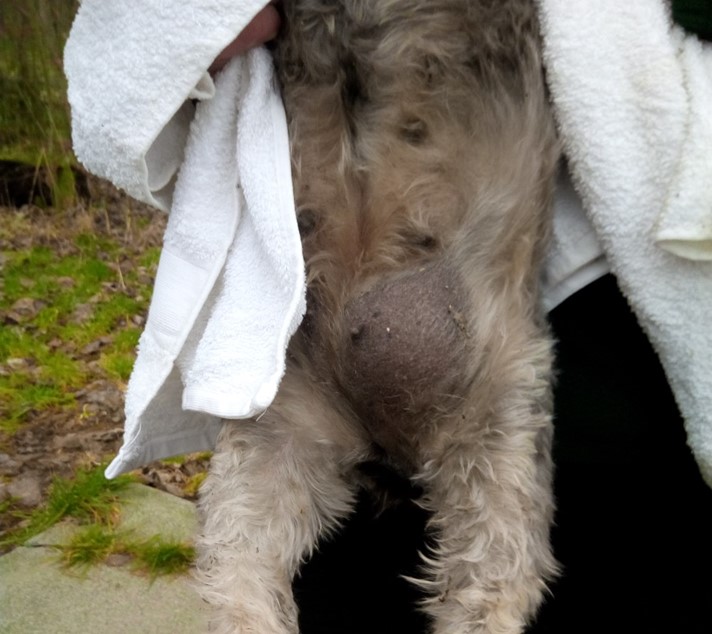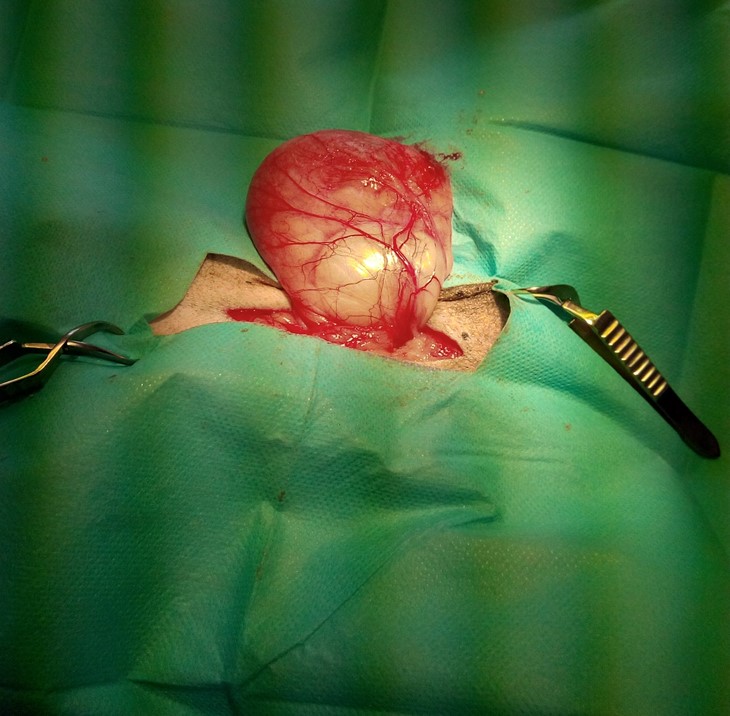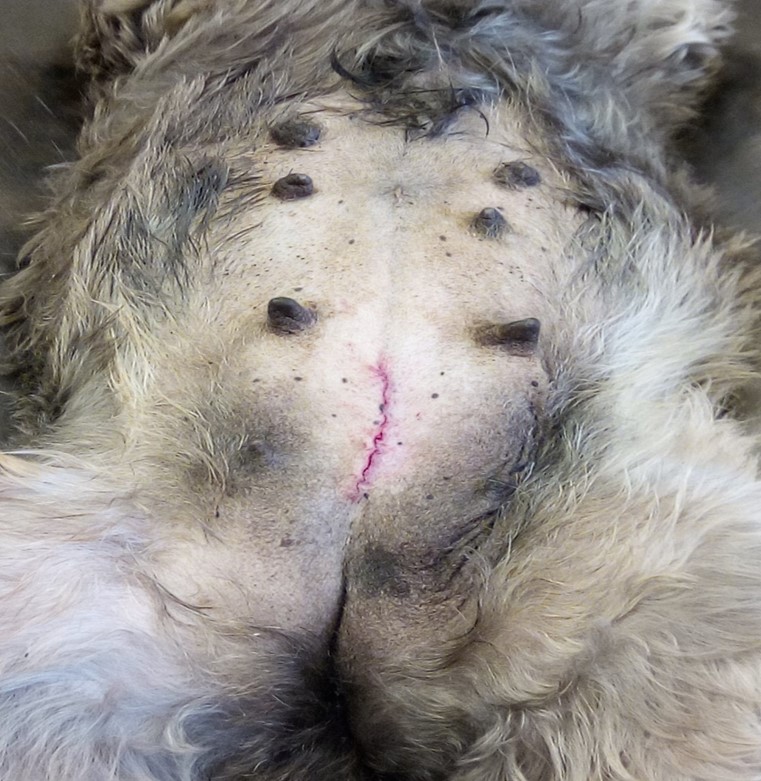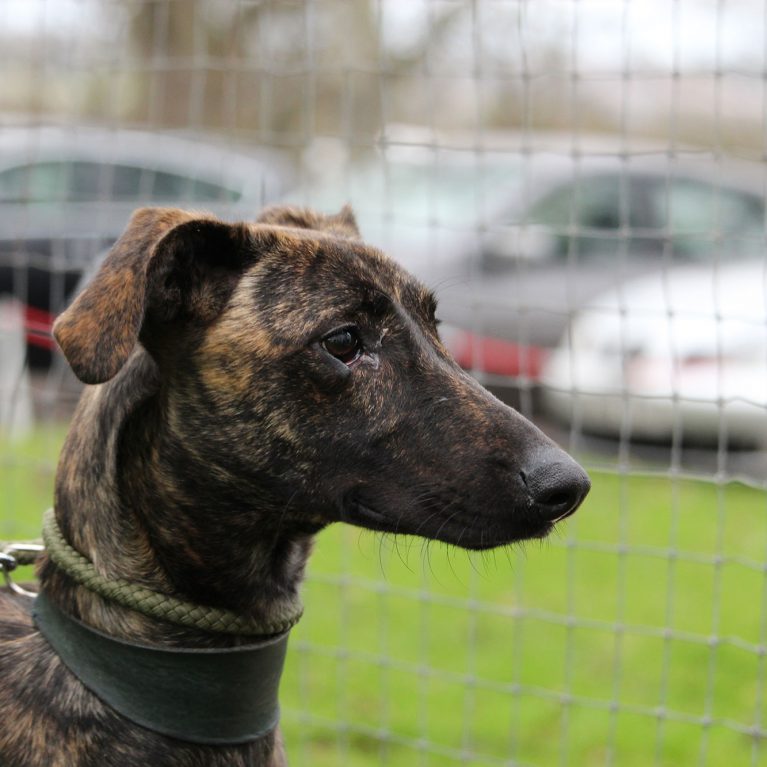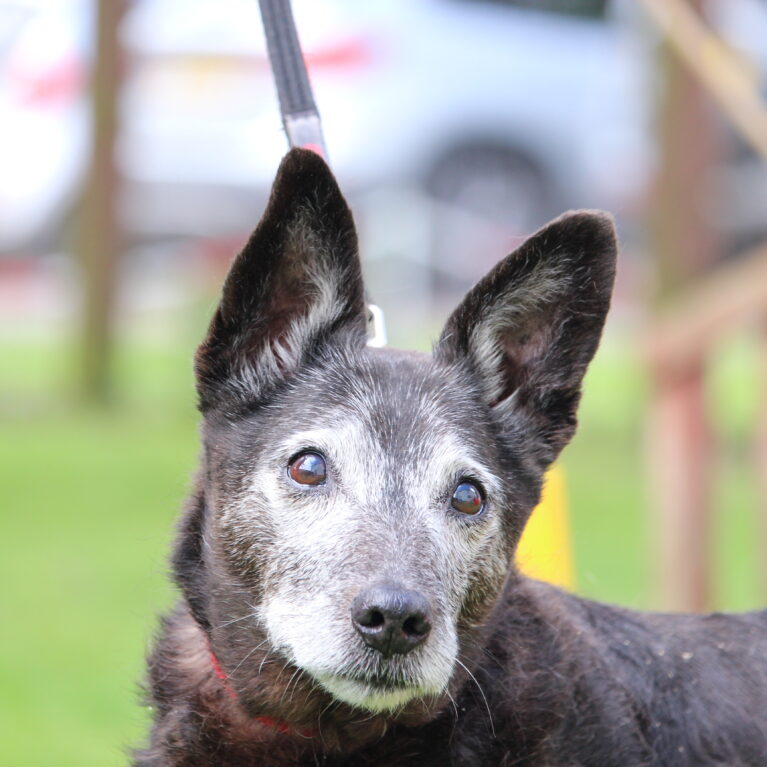Gwen’s Hernia Operation
Published: May 1st, 2021
Gwen’s Hernia Operation
Published: May 1st, 2021
SUPPORT THE WORK OF OUR VETS BY JOINING TEAM SAFE AND DONATING JUST £5 PER MONTH
Little Gwen is a 9-year-old Miniature Schnauzer. She arrived at Stray Aid in March 2021 with an infection in both her ears and a large inguinal hernia in her left groin. It’s thanks to our on-site vets, funded by your donations, that we were able to provide her with all the treatment she needed.
GWEN BEFORE HER SURGERY
Gwen is a really sweet elderly girl who is very timid. Our pound staff were worried that the swelling underneath might be a mammary tumour, so they were relieved when our vet diagnosed a hernia. The inguinal canal is a normally very small opening, but a hernia is an enlargement of this space between the muscles of the dog’s abdominal wall. This allows some of the abdominal contents to pass through and cause the swelling seen above. Sometimes the tissues in the hernia can become trapped, which is incredibly painful and can lead to sepsis and even death if not treated. Luckily, Gwen had no serious complications, but her hernia needed to be repaired to prevent potential problems.
Under full general anaesthetic, our on-site vet carefully surgically exposed the delicate hernial sac and gently returned the contents (fat and peritoneum) to the abdominal cavity.
The now empty sac was removed and sutured closed, before the hernial opening in the muscles closed with stitches.
Our vet also spayed Gwen at the same time. Both male and female dogs with inguinal hernias should not be bred from, as the condition can be passed on to their puppies. In addition, spaying can prevent some health problems such as mammary tumours and pyometra (a serious illness where the uterus becomes filled with pus, which can lead to blood poisoning, kidney failure and even death).
GWEN AFTER HER OPERATION
When Gwen’s ears were cleaned, the vet discovered that her ears were quite hairy. Some dogs have hair growing inside their ear canals, making conditions down there warm and moist due to reduced ventilation inside the ears. This environment is perfect for the bacteria and yeasts which live inside the ears normally, to multiply and result in ear infections, as in Gwen’s case. The hair was plucked out from her ear canals and she was given ear drops to treat the infection and soothe her sore ears.
Gwen was looked after by our wonderful staff and, once our vet had checked her over and given her the all-clear, she was ready to find her new loving home. And it is fantastic that she has now found her new forever home.
SUPPORT THE WORK OF OUR VETS BY JOINING TEAM SAFE AND DONATING JUST £5 PER MONTH
Or you can make a one-off donation to help support our vital work
